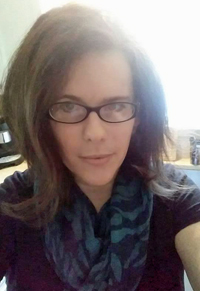 A few months ago I wanted to create a series that went deeper into the process of cover art for books and the graphic designers who created them. Without these truly gifted people, I often wonder if book sales would be what they are today. After all, we are such visual creatures. I can agree that cover layouts and graphic designs play an important role in the overall presentation of books. I’d like to welcome, award winning author, Lee Davis to indieBRAG today. Lee is here to talk with us about his graphic designing. He is a talented guy who loves the art of graphics and it certainly shows through is creative designs and process!
A few months ago I wanted to create a series that went deeper into the process of cover art for books and the graphic designers who created them. Without these truly gifted people, I often wonder if book sales would be what they are today. After all, we are such visual creatures. I can agree that cover layouts and graphic designs play an important role in the overall presentation of books. I’d like to welcome, award winning author, Lee Davis to indieBRAG today. Lee is here to talk with us about his graphic designing. He is a talented guy who loves the art of graphics and it certainly shows through is creative designs and process!
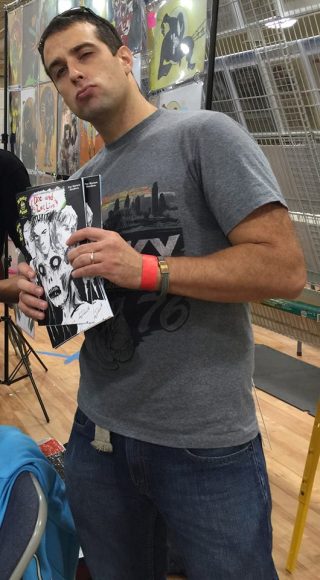 Lee Davis once pursued a career in thuggin’ gangsta rap, but then remembered that he grew up in suburbia and to do so would make him nothing more than a raging poser, so he revived his childhood dreams of illustrating and writing and filming stories of monsters and villains and good guys and copious amounts of blood and guts. He spent his teen years misusing his gifts as means to offend people after spending adolescence being bullied and having teacher figures beat the notion into his head that his dreams were psychological disorders, but then reached out to the Higher Power and got his head out of his rear and started creating works that brought him a much-needed sense of accomplishment and fulfilment. So those teachers can jump in a river. He’s definitely not writing his own bio here. Nope. He’s been published in magazines, anthologies and children’s books, and self-publishes several of his own titles. He recently completed a coloring book for a new publisher. He’s filmed two micro-budget independent films, Mossy Rock and Old Mossy Rock. Go to Amazon and buy them. See more of his work at www.leedavisbooksandart.weebly.com.
Lee Davis once pursued a career in thuggin’ gangsta rap, but then remembered that he grew up in suburbia and to do so would make him nothing more than a raging poser, so he revived his childhood dreams of illustrating and writing and filming stories of monsters and villains and good guys and copious amounts of blood and guts. He spent his teen years misusing his gifts as means to offend people after spending adolescence being bullied and having teacher figures beat the notion into his head that his dreams were psychological disorders, but then reached out to the Higher Power and got his head out of his rear and started creating works that brought him a much-needed sense of accomplishment and fulfilment. So those teachers can jump in a river. He’s definitely not writing his own bio here. Nope. He’s been published in magazines, anthologies and children’s books, and self-publishes several of his own titles. He recently completed a coloring book for a new publisher. He’s filmed two micro-budget independent films, Mossy Rock and Old Mossy Rock. Go to Amazon and buy them. See more of his work at www.leedavisbooksandart.weebly.com.
Lee. what is your Graphic Design Company called?
Just “Lee Davis” when I’m doing work for another author or publisher! When I self-publish I use the title “Purple Pudding Press”, which I’ll point out I used because it sounded funny to me and didn’t really indicate any particular genre, in consideration of my desire to leave open channels to branch out into different styles. Lately I’m contributing my comic works to the “Zombie Punk” collective that at this time is me and two fellow creative friends, where we pool our efforts, collaborate and one publications supports another. I maybe gave more details than were asked for but I wanted to give a little perspective to readers who are exploring different outlets for where and how to apply their craft!
How did you get in Graphic Design?
Just loving to draw and create since childhood. I’ve obsessed to express myself through the mediums of film, theatre, illustration and writing but with film and the like requiring other contributors and with the moves that happened during my childhood and becoming isolated I focused on writing and spent a lot of time illustrating. I hit a long period of stagnation after enough negative voices shouted down my dreams but at 22 I reawakened my desires to again do something constructive with my creative instincts. Mostly I’d just do free work for bands who would forget I existed as soon as they got their materials but much later I’d find publication in Planet Lovecraft, then Strange Aeons magazine, and then the children’s books under Scott Nicholson’s Haunted Computer publishing. These latter outlets didn’t make me rich but made me very happy and rewarded me with a long overdue sense of accomplishment and appreciation and I’ve kept the craft going with the time I can permit. Art to me is something I just have to do when the itch becomes too strong, whether there’s a royalty check involved or not. Again, a lot of details there but I’m hoping to shed light!
Will you please share the first layout you designed?
Besides doing several metal albums I’d mention the debut Gross graphic novel which I seriously need to reissue. It assembled several color comics and came out at 104 pages. It was a ton of work. There were of course countless DIY efforts over the years from all that time spent in what I’d consider creative isolation, or purgatory, but I don’t really count those.
Where do you find inspiration for your creations?
Well, focusing in on my personal endeavors which are closest to my heart, I’d mention my comics Cranberry Death Sauce, a satirical, comedic series, and Door to Death, which is a horror comic that is not without a humorous edge. There are of course commonalities, clearly to anyone who reads both. In that they’re very personal and thereby kind of embarrassing despite how happy I am with them, I can say that they are inspired by real life experience. In Cranberry Death Sauce I’d say mostly I’m poking fun at how in life there are so many great fruits of society, the benefits of those visionaries who worked hard and sacrificed, that become ruined when rotten people infiltrate and usurp. Everyday annoyances and disappointments, with an ongoing goal of overcoming and succeeding that drives my characters on. With Door to Death I’m more exploring the abstract in my dreams and my spiritual impressions, as well as developing characters and stringing their realities to the overshadowing nightmares. Ideas will come to me and make me laugh or give me a thrill and I’ll bank them in mind for when I get time to develop more comics. I’m itching to get back to both of these titles. I would like to point out that it’s a different but very interesting experience when I do illustration work for somebody else, in that I’m tasked with giving life to their vision through illustration, sometimes with just a few sentences to go on. I challenge myself to bring their ideas to life and see how close I get to the target and if I can wow them by growing my own ideas around the seeds they’ve planted, expand the vision. Creating is a very rewarding craft if not the highest paying craft!
What is your creative process?
Again focusing on comics, because I feel they are really an ultimate form of designing considering the multiple facets of storytelling, movement, pacing and generally trying to pull the reader in through illustration, I’ll give my basics. I use a motion tablet for digital drawing, and Manga Studio software. This basic rig was affordable, saved some trees, and is very efficient. Mine isn’t the most professional rig and there are some holdbacks because the scope is limited by the screen size but still, if you like to create comics I highly recommend Manga Studio for your digital tablet. A Wacom is great but I just can’t achieve the desired effect for illustration when my drawing tablet is detached from the actual strokes being made. Okay, so I lay out a page and divide the panels with a general idea of what kind of action is going on for the particular page. Then I pencil in the action as I see it happening in my head (sometimes achieving the image in mind, sometimes falling a little short and not feeling completely satisfied, then deciding how worthwhile it is to redesign in some cases–rarely). I lay down the ink and once I have a full comic I can fill in my dialogue balloons and create a cover illustration. I use Createspace and Kindle when self-publishing. Incidentally, my illustrations will shift from deep detail to lighter detail as I feel a scenario calls for. I think there are times when lightening up the feel will relax the reader, and other times where gnarly, deep details will draw them in at the right moments.
How do you keep your work area organized?
I would really stress the advantages of digital illustration, while never casting traditional illustration to the wind. Digital art saves me money and my work area is simply my tablet and the stylus, and wherever I happen to plop myself down to work. That’s it. I have a memory stick to transfer pages to my laptop where I’ll format pages and add words. Back when I did traditional illustration, I had one paper tablet, large enough for creating comic pages, and a bag of fresh pens and a bag of used pens, so I knew which pens had the best life.
What are your goals as a graphic designer?
At this point in my life, having achieved the goals I set out to accomplish, I just want to illustrate some more children’s books and make some more comics as time permits. I’m happy with where I’m at. I do want to make more original art pieces and finally see about setting up my shop to sell prints and hopefully build up clientele. I just finished a Lovecraftian coloring book for a publisher which will be out eventually. Besides the comics I want to keep on creating paintings, some of which will no doubt end up as covers for some of the horror novellas and novels I will write.
Is there a particular designer that has been influential in your work? If so, talk about it.
Here again my focus will stay on comics because that’s where my passion lies. Junji Ito is probably the most influential artist to me in this field. He is horribly underrated in the states, with very few of his works seeing translation for North American publication, but fans can find his work translated online easily enough. The man’s work is incredible. I have no idea why he doesn’t sell over here but then so much nonsense thrives in the bookstores. I’ve heard it speculated that he has some staff that helps him to ink his illustrations. Frankly I don’t know how he achieves this level of detail without losing his mind. But more than this it’s the genius, outlandish ideas behind his illustrations. Read the Uzumaki series and see what I mean. You will be amazed and genuinely creeped out. I’d also like to mention Hideshi Hino who is fantastic as well. He is a master of the macabre and I love that he uses cartoonish illustrations for such horrific visions, the combination is addictive to me.
What lessons have you learned along away honing in on your craft?
Good, good question. I’ve learned for sure that I haven’t mastered the ability to make deep impressions with simple strokes. There’s no way for me to get the desired effect with a lazy approach so casual illustrating just won’t work for me. A common thing, is that the more you illustrate the better you become, but that’s a given. It comes far more natural to me than it did years ago, to create images from my mind and get them as accurate as possible. I’ve learned methods of pulling in a reader by giving some cinematic quality to the sequential art—you could imagine you’re making storyboards for a film. One picture should lead fluidly to the next and help enable the reader to animate it in his or her mind. I’d say the story and characters are what’s most important but the one should strive with the illustrations to bring these elements as vividly to life as possible. I’d also say I feel that comics are great ways to learn about new stories and artists and they serve as more casual experiences where it’s the artist’s job to bring the stories to life through visuals, but reading fiction without the illustrations is very healthy for developing the powers of your own imagination whether you want to illustrate or not.
What book cover that you have designed that stands out to you the most?
Right now I’ll say the Door to Death cover for the first issue. I’m happy with it because it’s creepy and the more prominent element, that of a zombie woman’s face, jumps out and is surrounded by smaller elements that one can focus on when they take a closer look, and each element represents an element of the story contained. It’s also a fairly simple piece done in one evening and is representative of the illustration approach in the book.
What covers have you designed that are B.R.A.G. Medallion Honorees?
Those would be the children’s book Too Many Witches by Scott Nicholson and the cover of my Gross: Doctor Deathworm Rises young adults book which I published independently.
What are the tips, tricks and tools that help keep your designing career moving?
Wellllll you know I don’t know if I make the kind of bank to call it much of a career but it is, besides my family life, my primary focus, so … okay I’ll call it a career! For me my instincts are to pitch some materials out to publishers and see who bites and basically just keep creating as time permits. I do what I love and put it out there and self-publish while keeping in mind to look into options for more outside publication that will help bring my work to a larger audience. I also like to link my work so that if a reader enjoys something I’ve created they can explore other facets of my creative world. All of my works are in some way or another interconnected, my favorite example being how my character Lunch Time Larry has appeared in the indy films I directed as well as the Cranberry Death Sauce comic, and the films are also intertwined with the novels I’ve written, and the novels are connected to a short story that appeared in a horror anthology alongside a tale by Clive Barker.
Where can authors find you?
They can check out my work at Lee Davis Books and Art! Thank you again as usual for everything Stephanie!
Thank you!!
You’re most welcome, Lee! It is always a pleasure to have you visit indieBRAG!
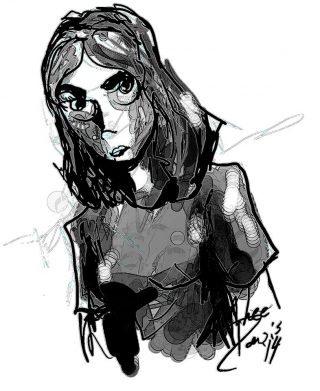
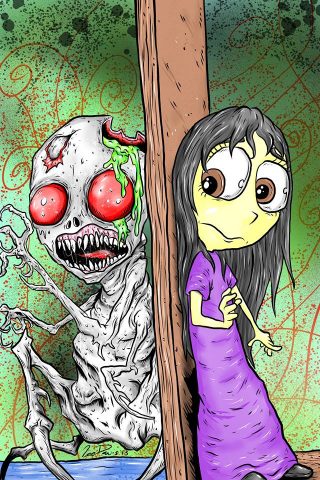
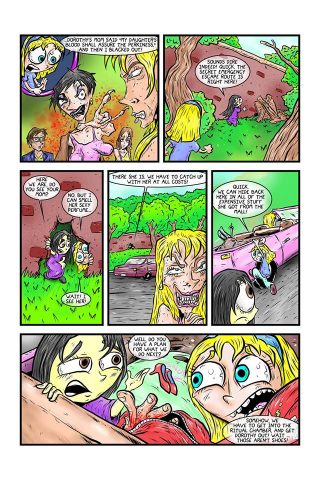
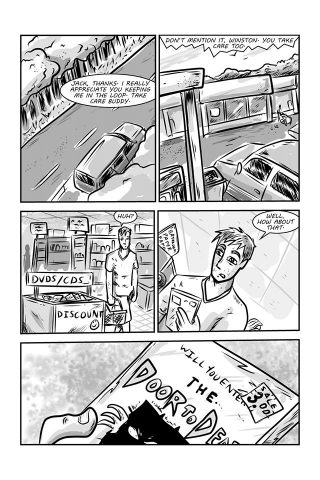
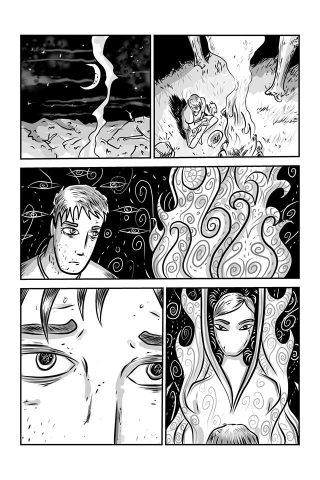
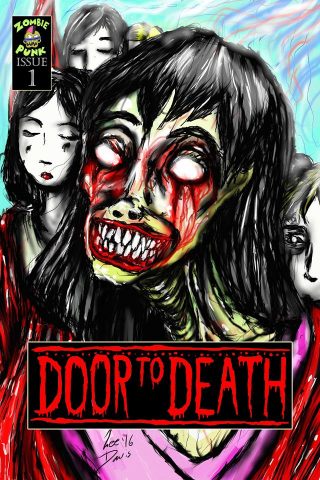
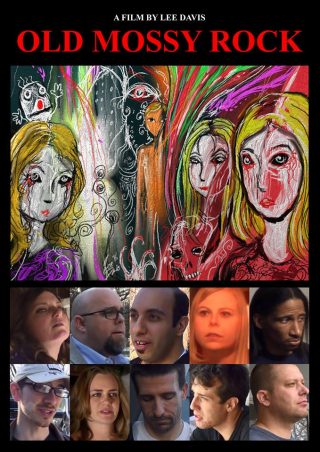
Loved reading about you Lee- a super creative, talented AND nice guy! Win, win, win!
Such a fun interview!